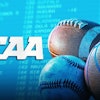While the Graduation Success Rate for football student-athletes in the 78 Football Bowl Subdivision schools continues to rise, the gap between African-American and White student-athletes persists.
While the academic picture for football student-athletes at the 78 Football Bowl Subdivision (FBS) institutions is generally positive, there are still issues of concern that require thoughtful attention. On Monday, The Institute for Diversity and Ethics in Sport (TIDES) released the report “Keeping Score When It Counts: Assessing the Academic Records of the 2018-19 Bowl-Bound College Football Teams.”
Utilizing statistics from the NCAA, the report shows the overall Graduation Success Rate (GSR) of football student-athletes at FBS schools rose from 77 percent in 2017 to 79 percent in 2018. The GSR for African-American football student-athletes also rose, going from 71 percent in 2017 to 73 percent in 2018. Of serious concern to TIDES founder/director Dr. Richard Lapchick is the persistent gap between African-American and White football student-athletes. The GSR for White players rose from an average 87 percent GSR in 2017 to 90 percent in 2018.
Ever since the NCAA created the Academic Progress Rate (APR) in 2004 with the threat of penalties to academically under-achieving teams, football student-athletes have shown positive improvement. Lapchick noted there is more societal consciousness of the fact that only about two percent of these football student-athletes will play professionally, so they need education to succeed in life. While there are still a few coaches that place winning above all else, he senses that the majority of schools are committed to academics.
In an interview with Diverse, Lapchick noted that the achievement gap between African-American and White student-athletes is reflective of a larger educational issue of college preparedness.
“This is an issue of our public educational system, particularly in urban areas, where schools are under-funded,” said Lapchick. “The academic preparation of some urban student-athletes when they get to our college campuses is behind young people who came from suburban areas where schools are better funded, have better teachers and have better infrastructures.
“At the same time, colleges and universities that are going to take somebody in who on the surface of it doesn’t meet their academic standards, but they think they have the resources there to help raise that, that’s imperative,” he added. “If they don’t have the resources to increase whatever level [the student-athletes] are coming in at … then that school, from my point of view, is not behaving ethically.”















